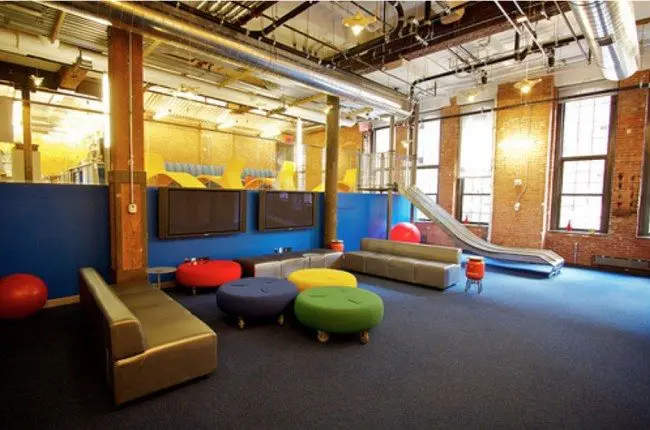Richard Yeo, Sales Director at Applied Workplace, explains why the latest office design trends could have a negative impact on your business.
From sleeping pods to giant open plan spaces, it’s easy to jump on the bandwagon when it comes to office design. After all, if it works for a company as successful as Google, it’ll work for your business, right? Not necessarily. To create an effective design, it’s essential to analyse your company’s culture and decide how you define productivity.
Google’s Offices Look Like Fun but Would They Work for Your Business?
There’s no denying that the latest office design trends are shaped by the world’s biggest companies. Research has overwhelmingly shown that open plan offices can make us miserable, distracted, and, in some cases, even ill, and yet, nearly 100 years after they were first introduced, they are still arguably the most common work environment.
But why? I’d argue that it’s the ‘cool’ factor. The offices of tech giants such as Google have become the workplace eye-candy for a whole new generation, and we’re regularly besieged with images containing everything from employees lounging in hammocks on their laptops, to open-plan spaces, filled with beanbags.
Does it look like great fun? Yes. Does it work for Google? Almost certainly – we can be pretty confident they know what they’re doing. Should you rush out, remove your partitions and buy some beanbags? Probably not.
Aside from the fact that you might waste your money – which is unlikely to be as plentiful as Googles’ – these types of collaborative, relaxed spaces might not be the best design to enhance your employees’ productivity.
Apple: The Forerunners of the Current Trend for ‘Cool’ Office Design
In the 1980s, cubicle mania and power dressing was at its height. Then, Apple came along and everything changed. The new tech company’s team started doing something unprecedented – wearing hoodies to important launches.
This shift in attitude was ground-breaking and since then, tech companies such as Google and Facebook have paved the way when it comes to a relaxed, ‘cool’ working culture – and this culture has filtered down into office design.
Many of the trends that we’ve seen in the past few years are suited to this type of working environment. For example, the open plan, community-centric approach arguably experienced a revival thanks to its influential adherents, which include Yahoo, eBay and Facebook, the latter of which commissioned an office with the “largest open floor plan in the world”.
Aside from open plan layouts, there’s been the strategic placing of spaces to encourage mixing between departments, as seen at Samsung, and the installation of fewer workstations than employees, with the hope that shift patterns and mobility will allow for sharing and ‘positive crowding’, as seen at the new BBC offices.
The problem with trends like these is that they only work for specific office cultures.
Avoiding the Latest Fads and Finding a Solution That Works
So, how do you avoid the latest fads and find an office design that really works for your business? The key metric most companies use to measure a space’s efficiency is cost per square foot. However, this gives little insight into whether a space’s design is helping or hindering performance.
Turning Tools That Analyse Customer Behaviour Inwards
According to an article by Ben Waber, Jennifer Magnolfi and Greg Lindsay in the Harvard Business Review, businesses have the means to develop these insights – it’s just that the tools they need are turned outwards rather than inwards. The same sensors, activity trackers, smartphones and social networks used to track customer behaviour can also be used to analyse employees’ performance.
This emerging field of performance data uses a variety of tools, such as socio-metric badges that capture interaction, and is beginning to unlock the secrets of good office design, in terms of density, proximity of people and social nature.
By combining the resulting metrics with data such as sales performance, it’s possible to demonstrate a work space’s effect on the bottom line and then make informed changes to improve it.
Appreciating How Your Company Defines Productivity
Developing an entire set of tools to gather performance data might seem overly ambitious for smaller businesses. However, if this isn’t possible, appreciating how your company defines ‘productivity’ is essential.
For example, is it working faster? Doing more work with fewer people? Reducing costs but maintaining sales? Or coming up with more creative ideas?
Once these objectives are understood, it’s easier to establish whether your current design is really working, as well as to develop ways to improve it. The key is to analyse your company culture and what would make it a more productive environment, before implementing changes.
When you see images or read about the latest office design trend, it’s easy to jump on the bandwagon. However, it’s important to remember that what works for one company may actually have a negative effect on your employees’ performance.
The key is to analyse your company culture and employee behaviour, as well as appreciating how you define ‘productivity’. Only then can you make an informed choice regarding your office’s design.
Richard Yeo, Applied Workplace


